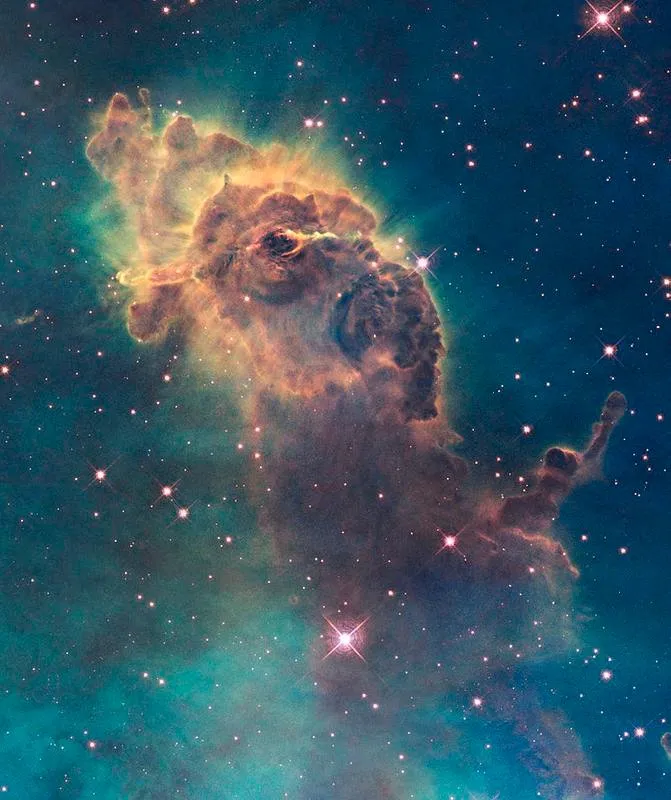
Image source [1]: Portion of the Carina Nebula.
Hello friends, today we will talk about the types of nebulae that exist in our universe, A nebula is an interstellar cloud of dust, hydrogen, helium and other ionized gases. Originally, nebula was a name for any diffuse astronomical object, including galaxies beyond the Milky Way.
Reflection nebulae are clouds of interstellar dust which might reflect the light of a nearby star or stars. The energy from the nearby stars is insufficient to ionize the gas of the nebula to create an emission nebula, but it is enough to give sufficient scattering to make the dust visible. An example of this is that of the bluish nebula that surrounds the Pleiades. They appear bluer than the star because of the way starlight is scattered by the dust particles in the nebula (equivalent to the scattering of light that makes the sky blue).

Image source [2]: The Witch Head reflection nebula (IC2118), about 900 light years from earth, is associated with the bright star Rigel in the constellation Orion.
European Southern Observatory (ESO)
An emission nebula is a nebula formed of ionized gases that emit light of various wavelengths. The most common source of ionization is high-energy photons emitted from a nearby hot star.

Image source [3]: Planetary nebulae, represented here by the Ring Nebula, are examples of emission nebulae.

Image source [4]: Emission nebula LHA 120-N55 in the Large Magellanic Cloud.
A dark nebula or absorption nebula is a type of interstellar cloud that is so dense that it obscures the light from objects behind it, such as background stars and emission or reflection nebulae. The extinction of the light is caused by interstellar dust grains located in the coldest, densest parts of the larger molecular clouds. The great dark line that divides the Milky Way in two in the constellations of the Swan and the Eagle is also due to a cloud of dark dust.

Image source [5]: Lupus 4 is a dense pocket of gas and dust where new stars are expected to form.
Derek Fiechter
A planetary nebula, abbreviated as PN or plural PNe, is a kind of emission nebula consisting of an expanding, glowing shell of ionized gas ejected from red giant stars in their lives. The term was used by Herschell because of its circular and very delimited appearance reminiscent of a planet's disk, hence its name.

Image source [6]: X-ray/optical composite image of the Cat's Eye Nebula (NGC 6543).
European Southern Observatory (ESO)
